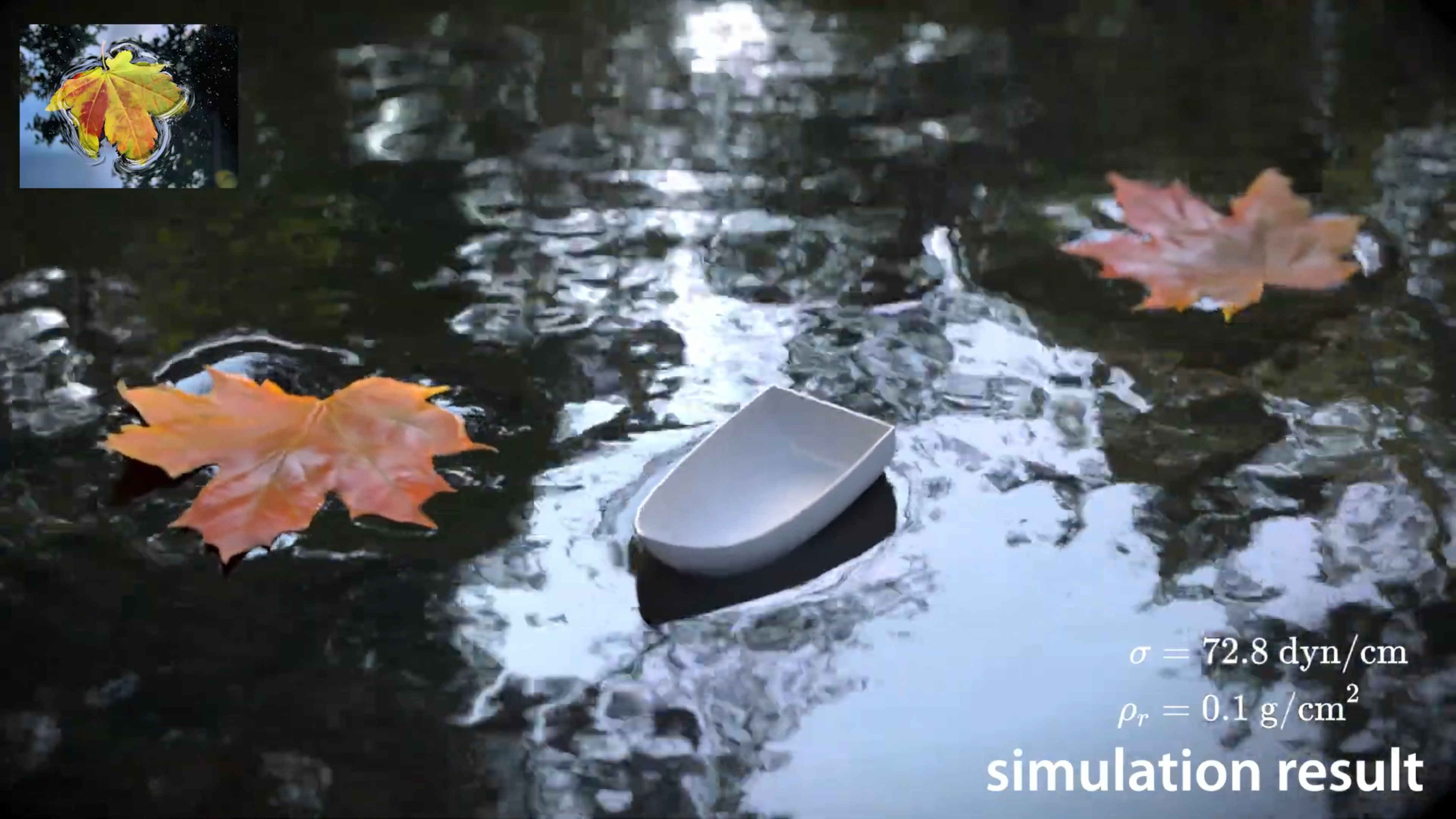Can You Tell If These Cherries Floating in Water Are a Simulation?
Everyday brings another graphical breakthrough that boggles the mind. Computer generated images of food have reached a terrifying fidelity and pictures of baked goods on the internet can't be trusted. The intricacies of water have long eluded the best simulations, but now researchers across the planet have collaborated to create stunning renderings of surface tension. A paperclip floating in liquid, cherries sinking into milk, and thumbtacks colliding in water can all be simulated with stunning realism and fidelity.
According to the research paper Solid-Fluid Interaction with Surface-Tension-Dominant Contact" which will be published in the August edition of ACM Transactions on Graphics, the simulation looks so real because the researchers have invented a new form of modeling solid and water interaction using what they call three-way coupling. At the heart of our physical model is a thin liquid membrane that simultaneously couples to both the liquid volume and the rigid objects, facilitating accurate momentum transfer, collision processing, and surface tension calculation," they said in their paper.
Typically, when an interaction between solids and liquids is rendered the artists use one or two-way coupling. In one-way coupling, the solid affects the liquid. In two-way coupling the solid affects the liquid and the liquid, in turn, affects the solid. Three-way coupling adds a specially designed membrane to the equation that simulates surface tension.
The results are stunning.

The interaction of solids and liquids is hard to accurately simulate, largely due to computational limits. The researchers' method of creating a separate system that simulates the surface tension that arises around these interactions is a workaround, one the team acknowledges has limitations. The simulation only works with simple liquids and solids. It also can't account for hydrophilic objects like sponges.
It's still an impressive step in a beautiful direction. We believe that the three-way coupling numerical method we proposed in this paper is the first step toward building accurate numerical simulators to model complex solid-fluid interactions with strong surface tension," the researchers said in their paper.